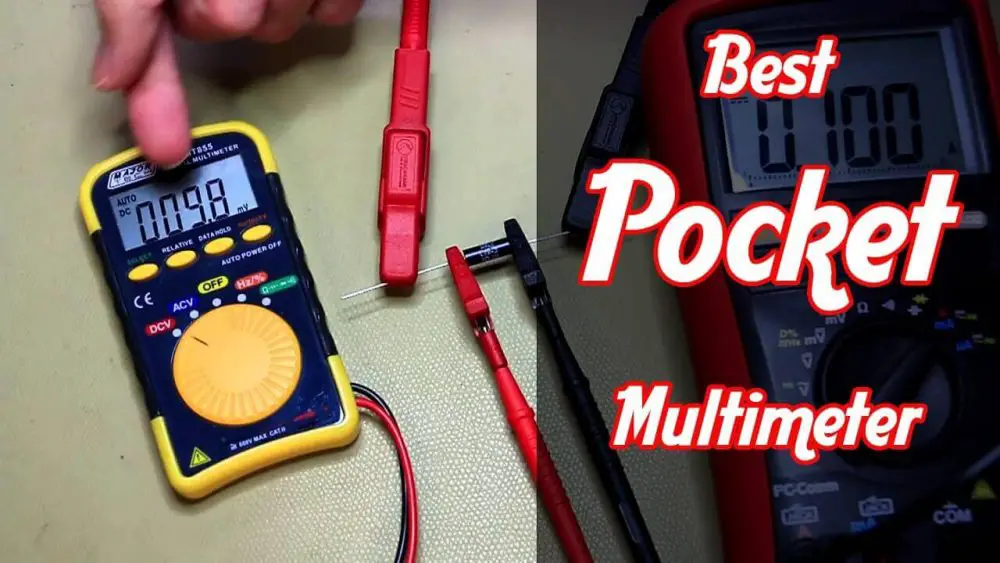How to test a fuse with a Multimeter
The fuses require testing to check that they are still in good working condition. We are using a multimeter to test the fuses, and doing so is fast and easy to learn.
When a multimeter reading changes to a low resistance value similar to touching the two leads together, therefore, the fuse is working well. But if the resistance reading is higher than the resistance of the multimeter leads it means the fuse is not working well.

Table of Contents
What are fuses
Fuses are just wires designed not to last, but their function is to prevent damage to more valuable electrical equipment or prevent fires, especially in homes caused by power surges. When too much voltage runs through the fuse, it burns out quickly, opening the circuit and stopping the current from flowing through the circuit.
Blown Fuse:
The display shows the original 100% resistance state if the multimeter reading does not change.
Older homes and cars that do not use modern circuit breakers use fuses to prevent damage from electrical surges. Unfortunately, it sometimes makes these fuses need testing to check that they are still in good working condition. So instead, we use a multimeter to test the fuses and learn to test.
There are several varieties of fuses, but their differences are fundamentally in appearance. Here is a summary of the two you are most likely to see:
1. The cartridge fuse:
The cartridge fuse is cylindrical; it has been common in many devices for many years, from homes to small electronic devices. These fuses contain metal contact or terminal points on either end and consist primarily of a tube that includes the wire.
2. The blade fuse:
The blade fuse is an automotive fuse that has been used in the last 20-30 years. They dubiously resemble the plug of a power cord, with two metal prongs emitting from a plastic housing that contains the wire. Previously, most vehicles also held small glass cartridge fuses. Blade fuses plug smoothly into banks, and relatively little space is required to house a large number of them together.
Learn How a Multimeter Works:
Multimeters measure A/C and D/C voltage, electrical resistance, and the flow of current. For example, to test a fuse, you can measure the continuity and determine the complete circuit. And choose the Ohms selector to check the resistance.
A multimeter has a positive and negative lead. When testing resistance in a circuit, the multimeter will transmit a small quantity of electricity from its battery and then measure the amount passing through the circuit or an object.
Understand why you test the fuses:
- Testing fuses is the simplest way to examine troubleshooting in the electrical systems of your car or home, and for that reason, it is a vital device to possess.
- It is easier to test fuses than it is to try other electrical equipment. This is because different components in your home or car involve complex wiring systems that run on for some length.
- In addition, we repair most car parts at repair shops, which will usually cost quite a lot of money.
- Testing fuses with a multimeter is comparatively simple, and the equipment involved is inexpensive and easy to operate.
- Many types of fuses allow only visual confirmation that the fuse is still functional.
- They are clear so that you can see if the wire remains intact.
- If the translucent area turns black, it is usually because the fuse has burned out.
- However, some fuses after slightly overheating will create that blackened stain, which may have resulted from unnoticed incidents weeks or months earlier.
- If a device is not functioning, then consider testing the fuses. If the fuses are all still working, there is likely a more severe problem, and it may be time to call on an expert.
- Turn the equipment off and remove the fuse. Make sure the device, equipment, or turn off the vehicle before removing the fuse. To remove the fuse, pull it straight out of the slot.
How to Test a Fuse with a Multimeter?
To proceed, we are using a multimeter to test the fuse of any range in the following steps.
Step 1
Take out your multimeter and switch it ON.
Then, select the resistance function by using the dial switch.
Step 2
Take out the fuse of any rating and place it on the wooden table to avoid its contact with any other conducting material.
Step 3
Using the multimeter test probes, connect them to either end of the fuse metal coverings. Select the lowest resistance range (200 ohms in this example)
Step 4
There are two possibilities:
i) If the display reads some stray voltage value (in ohms), then the fuse is in good condition 1.5 Ohms.
ii) If the display reads 100% resistance state, i.e. the value 1, the fuse is blown out.
This process is the same for all types of fuses—the key feature is to test the filament’s resistance inside the fuse.
If the multimeter shows 100% resistance, then the fuse is technically unusable. In this case, we immediately need to replace it with a new one.
Precautions:
If you want to test a fuse while connected to a circuit/system, make sure you switch OFF the circuit/system before trying to prevent shock or a short circuit.
Frequently Asked Questions:
If your car fuse is not functioning and doesn’t appear to look blown, here are some reasons why that may happen:
1. The fuse has a manufacturing fault. Is it a quality fuse or a cheap replacement product?
2. When we switch, a blown-out fuse has been replaced incorrectly with a cheap or lower-rated fuse.
3. The device overpowered by the fuse is faulty, drawing a higher current.
4. The fuse is perfect, but something went wrong in the testing process.
5. A car fuse would not commonly fail because of overuse or ageing. Automotive fuses are designed to function for a very long period when operated within the manufacturer’s specified parameters.
6. Electrical circuits in modern vehicles are designed by qualified electrical engineers and subjected to definite testing in extreme conditions, so they are usually very reliable. Additionally, car manufacturers use high-quality fuses which are assembled and tested to strict standards.
1. There are a few ways to check if a car fuse is blown out quickly. Firstly, we have to find the fuse which controls the devices that are not working.
2. There may be a diagram inside the fuse box lid or the owner’s manual, or you can find it online.
3. Next, remove the fuse using fuse pullers – make sure your car is completely switched off before you do this!
4. Next, inspect the fuse for visual signs of discolouration or broken filaments.
5. You can then install a replacement car fuse.
6. Testing a fuse is a straightforward task. The basic principle is to check its resistance, which indicates its ability to allow the current flow in a circuit, and two, suppress voltage spikes and surges.
Conclusion:
This article is a simple guide on testing a fuse with a digital multimeter that has helped you increase your knowledge about electrical testing. A fuse is a passive component used in electrical and electronic applications that are prone to voltage spikes. Therefore, an electrician is known to the basics of fuse testing and replacement.
We used a small fuse (we l use a 5A fuse) and a digital multimeter to test a fuse, we have defined the fuse, its functions and its types and taught you how to evaluate whether the fuse is working or not. If you have any more queries, you may ask in the comments.
Related Posts:
How to test if a wire is live without a tester





